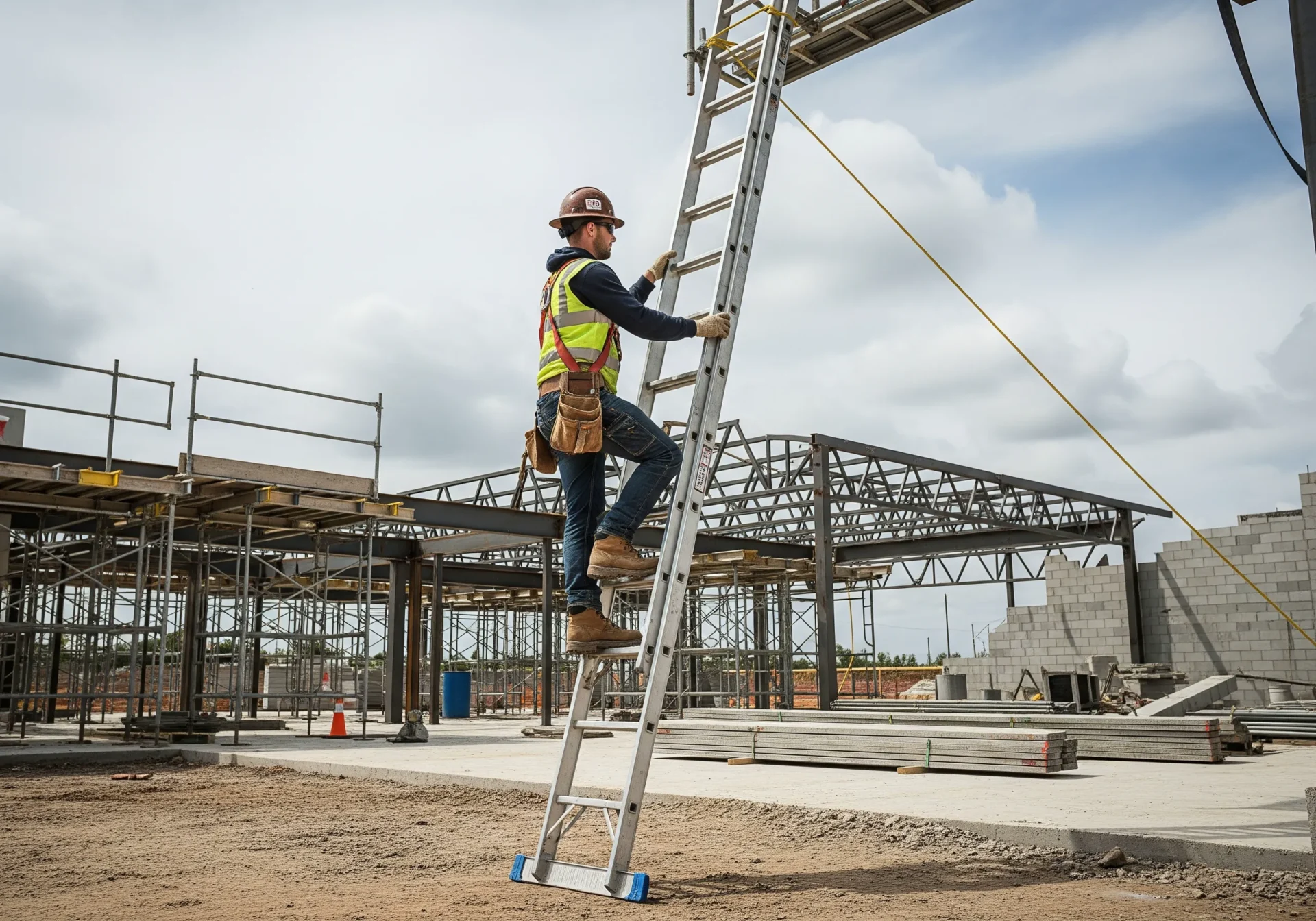Introduction
In workplaces such as construction, manufacturing, and logistics, ladders and stepladders (hereafter referred to as ladders) are used on a daily basis. However, the casual assumption that “it’s fine because it’s for a short time” poses a risk of serious accidents. LA455, jointly issued by the UK’s Health and Safety Executive (HSE) and the Ladder Association, clearly states that risk assessment should be prioritized over the duration of the work. Even for short periods, the use of a ladder is not permitted unless the setup conditions, work environment, and operator’s proficiency meet safety standards. This article explains the correct application conditions of LA455, the true meaning of “short-duration use,” and key points for safe use in the workplace.
Issues and Background
Market Data
According to UK HSE statistics, falls from height account for about 25% of all fatal accidents, with ladders being involved in many of them. Thousands of non-fatal fall accidents also occur annually, with causes categorized as overloading, improper setup, and inappropriate user posture or actions. These figures indicate that even though ladder use is routine, safety is not automatically guaranteed.
Source: Health and Safety Executive (HSE)
Risk Presentation
The idea that “it’s safe because it’s for a short time” is a typical factor that leads to serious accidents. LA455 requires a comprehensive assessment of the work environment, load, operator’s competence, and other factors, rather than just the duration of the work. The “30-minute rule” does not mean “it’s safe if it’s within 30 minutes”; rather, it is a guideline suggesting that if the work exceeds 30 minutes, other equipment for working at height (such as scaffolding or work platforms) should be considered.
Source: Ladder Association LA455 Guide
Product & Service Introduction
Features
The correct usage conditions recommended by LA455 include maintaining a 75° setup angle, maintaining three points of contact during work (two feet and one hand, or two hands and one foot), and adhering to the load limits for each product. A visual inspection must always be performed before work to check for damage or wear. Leaning ladders require stable footing and secure tying. Stepladders must have four points of contact with the ground, and their locking mechanisms must be securely engaged. For extension types, the locking status of each section must be checked. For combination ladders, the lock for each configuration and the suitability of the usage mode must be confirmed.
Source: Ladder Association LA455 Guide
Case Study (Before → Action → After)
- Before: Used an unstable ladder for short-duration tasks.
- Action: Introduced training based on LA455 standards, enforced the use of stabilizers and secure fixing.
- After: Maintained zero accidents, improved work efficiency by 15%.
The Reliability of Hasegawa
Quality Management & Certification
Hasegawa is ISO9001 certified and provides EN131 compliant products. All products undergo a 100% inspection before shipment, and their durability and safety are confirmed through regular strength tests. This ensures the supply of high-quality ladders that can withstand long-term use to the worksite.
Source: EN131 Standard Overview (European Committee for Standardization)
Custom Orders & Support System
We also support the design and manufacture of custom-ordered ladders tailored to the site environment and application. Details such as size, shape, and material can be customized to meet on-site needs. After delivery, we provide on-site safety training and periodic inspection services, offering long-term safety support even after implementation.
Source: Hasegawa Kogyo Co., Ltd. Official Website
Source: Ministry of Health, Labour and Welfare, Ordinance on Industrial Safety and Health (Japan)
Conclusion
Even for short-duration tasks, it is essential to correctly assess the work environment and usage conditions and to meet safety standards. The LA455 guidance emphasizes the importance of making judgments based on risk, not time, and this mindset is directly linked to establishing a safety culture in the workplace. By adhering to the basics—such as ensuring safe setup methods, complying with load limits, and conducting regular inspections—accidents can be prevented while increasing work efficiency.

